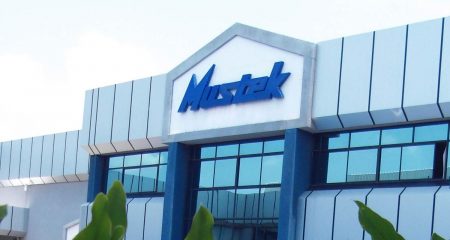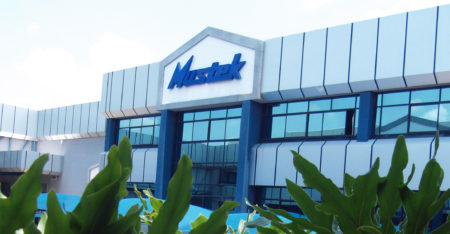 Last week, Rectron held a brand awareness event for the MakerBot brand, a popular collection of 3D printers. Sadly, attendance didn’t reflect that. Only a handful of media types showed up, outnumbered by the company and marketing people on hand, despite some rather nice catered snacks.
Last week, Rectron held a brand awareness event for the MakerBot brand, a popular collection of 3D printers. Sadly, attendance didn’t reflect that. Only a handful of media types showed up, outnumbered by the company and marketing people on hand, despite some rather nice catered snacks.
Then again, I’m not really surprised. 3D printers aren’t the sexy headline grabbers they were a year ago, when everyone was buzzing about miniature factories and garage designers turning the world on its ear. Now anyone can make almost anything at home, only armed with a 3D printer, a design program and a good idea. Wired founder Chris Andersen continued his new career of naming things and dubbed this the “maker revolution”. The machines were to become cheaper, we were told, because of expiring patents and Chinese eagerness to make knock-offs.
Some of this did come to pass, but again we are reminded how distorted size can become when viewed through the prism of the Internet. A storm in a teacup is rendered as a typhoon and the makers of the world were turned into giant straw Davids threatening the faltering Goliaths of industry. Instead, the tinkering continued where and how it always has: in backrooms and at mainly hobbyist scale. If anything, 3D printers just made it cheaper and easier for established industries to do their thing.
So, after the sensation had drained away and all that remained was the dour face of pragmatism, writers and editors slinked off to new conquests and left the 3D printer people to deal with their own fates. Not all publications threw away the torch and some keep a regular eye on both the maker movement and local 3D printing enthusiasts. But by and large, the hype is gone.
That’s a pity, because those snacks at the MakerBot event were really good. Though tech journalism is not a hard beat, we can sometimes be subjected to the scarring horrors of mundane catering. But these nibbles really hit the spot.
So did the machines. In my mind, most 3D printers look like the RepRap models, which are basically sophisticated “kit” printers built by technically proficient types. There are always a few on display in Centurion, at the House 4 Hack. Yet on the other side of the spectrum are the commercial printers, such as MakerBot, and they look far more slick and inviting. Of course, they also cost a bit more than a home-built machine, but those prices are surprisingly low.
Rectron was mainly punting the fourth- and fifth-generation machines from MakerBot, where an entry level machine can cost between R14 000 and R16 000. That will give you a print height of roughly 10cm. The most expensive model goes for a whopping R74 000 or more, but it does print rather large objects. A Rectron spokesman told me those are apparently very popular because the industrial world loves them. Even though you get hardcore 3D printers, they still cost a lot to operate. A MakerBot machine can pump out a cheap prototype and save you a lot of headaches later on. Nobody wants to finish a R1m print only to discover they forgot to put on handles.
To print requires rolls of plastic filament, which resemble the chord you’d put into a weed-eater, though not at all the same thing. That comes down to a few hundred bucks per kilogram, but most print jobs consume grams at a time, so the economics make sense. Alas, 3D printer makers are already pulling the same tricks as the regular printer manufacturers: there are “official” filaments and not using them could void your warranty. Well, let them have their cake for now. One day we’ll all buy third-party filament on the cheap. A more interesting development: MakerBot plans to introduce new filament heads later this year, which will allow you to print with different materials using the same printer.

The final guest to this hardware catwalk is an object scanner, pricing for around R10 000. It uses lasers to scan objects and digitise them into 3D files, covering objects as tall as 10cm. So by my calculations, R30 000 can net you a printer, a scanner and a reasonable amount of filament.
That’s not a bad investment, providing you can figure out what to do with the technology. Some have taken to art — look up Michaella Janse van Vuuren’s work for some examples. Others are far more altruistic, such as the Reprap pedigree Robobeast and its mission to change lives in poor countries. I was once told of a group of people in New Zealand who go to fetes and offer the service to replace pot handles, microwave knobs or whatever bits of plastic doodad you need but can’t find. Rectron has its own stories of clients, some who recouped their investment in a few jobs.
But it’s still a limited scope for such a pricey investment, and even Rectron’s line is that it wants merely to promote the MakerBot brand: coming in early to get a seat, not hoping for explosive sales just yet. 3D printing is here to stay, and it’s not a bank breaker anymore. But the prince has gone home and the chariot is back in the pumpkin patch. Time to start scrubbing floors again in hope of becoming head janitor and maybe one day open your own cleaning company.
The dazzle has fizzled and 3D printing now faces its biggest adversary: an air of mundaneness. It’s no longer famous or the star at the party. Fortunately, price and practicality have arrived to keep the flame alive.
- James Francis is a freelance writer whose work has appeared in several local and international publications




